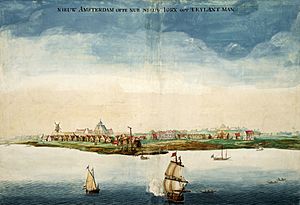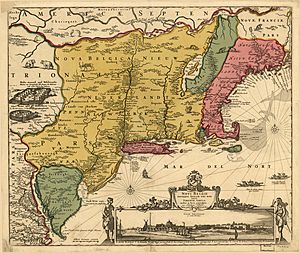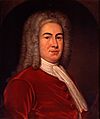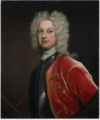List of colonial governors of New York facts for kids
The land that is now New York was first settled by European colonists in the 1600s. It was part of a larger Dutch colony called New Netherland. This colony included parts of today's New York, New Jersey, Connecticut, and Delaware.

Many people from the Netherlands, Flanders, Wallonia, and Germany came to live there. The colony quickly became a "melting pot" of different cultures.
In 1664, during a war between England and the Netherlands, English forces took control of New Netherland. The territory then became part of several English colonies. The Dutch briefly took it back from 1673 to 1674. But New York remained an English, and later British, possession until the American colonies declared independence in 1776.
From 1702 to 1738, the colonies of New York and New Jersey shared a royal governor. This started with Edward Hyde, Lord Cornbury in 1702. It ended when New Jersey got its own governor in 1738.
Contents
The Dutch Era: New Netherland (1624–1664; 1673–1674)
New Netherland was a Dutch colony in the 1600s. It was run by the Dutch West India Company. This colony covered land along the eastern coast of North America. Today, this land includes New York, New Jersey, Delaware, Connecticut, and parts of Pennsylvania and Rhode Island. The main city of the colony was New Amsterdam, located at the southern tip of Manhattan Island.
New Netherland started as a business to trade furs. By the 1650s, it grew a lot and became a very important trading port. The leader of the Dutch colony was called the Director or Director-General.
On August 27, 1664, four English ships sailed into New Amsterdam's harbor. They were led by Richard Nicolls and demanded that New Netherland surrender. This event led to a war between England and the Netherlands. The Dutch then gave the territory to England as part of a peace treaty.
Important Dutch Directors
- Cornelius Jacobsen May (1624–1625): He explored the area and set up early outposts.
- Willem Verhulst (1625–1626): He started building Fort Amsterdam on Manhattan Island.
- Peter Minuit (1626–1631): He is famous for buying Manhattan Island from Native Americans in 1626 for goods worth about 60 Dutch guilders.
- Wouter van Twiller (1633–1638): He bought Governors Island and tried to protect the colony's land claims.
- Willem Kieft (1638–1647): His actions led to a conflict with the Lenape tribe, known as Kieft's War. He was later fired.
- Peter Stuyvesant (1647–1664): He was the last and most famous Director-General. He helped New Netherland grow but eventually surrendered it to the British.
The Dutch Take Back the Colony (1673–1674)
In 1673, during another war with England, the Dutch recaptured New Amsterdam. They renamed it "New Orange." However, this was short-lived. In 1674, the Dutch had to give New Amsterdam back to the British as part of a new peace treaty.
Under British Control (1664–1673; 1674–1783)
After 1664, the territory became known as the Province of New York. It was part of the British Empire until the American colonies declared independence in 1776. For a short time (1688-1689), New York was part of a larger British area called the Dominion of New England.
Many governors served during this British period. They were appointed by the British Crown to manage the colony. Some notable governors included:
- Richard Nicolls (1664–1668): The first English military governor after the Dutch surrender.
- Edmund Andros (1674–1683): A powerful governor who also oversaw other colonies.
- Thomas Dongan, 2nd Earl of Limerick (1683–1688): He helped establish important laws for the colony.
- Edward Hyde, 3rd Earl of Clarendon (1702–1708): He was the governor who also oversaw New Jersey.
- Robert Hunter (1710–1719): A popular governor who helped bring stability.
- William Cosby (1732–1736): His time as governor included a famous court case about freedom of the press.
- George Clinton (1743–1753): The longest-serving British governor of New York.
- William Tryon (1771–1774, 1775–1780): The last royal governor before and during the American Revolution.
The British governors played a big role in shaping New York's early history, leading up to the American Revolution.
Images for kids
See also
- For a list of governors of New York state after independence (1777–present), see: List of governors of New York.
- Director-General of New Netherland, for a list of the Governors of New Netherland from 1624 to 1664.
- List of colonial governors of New Jersey

























